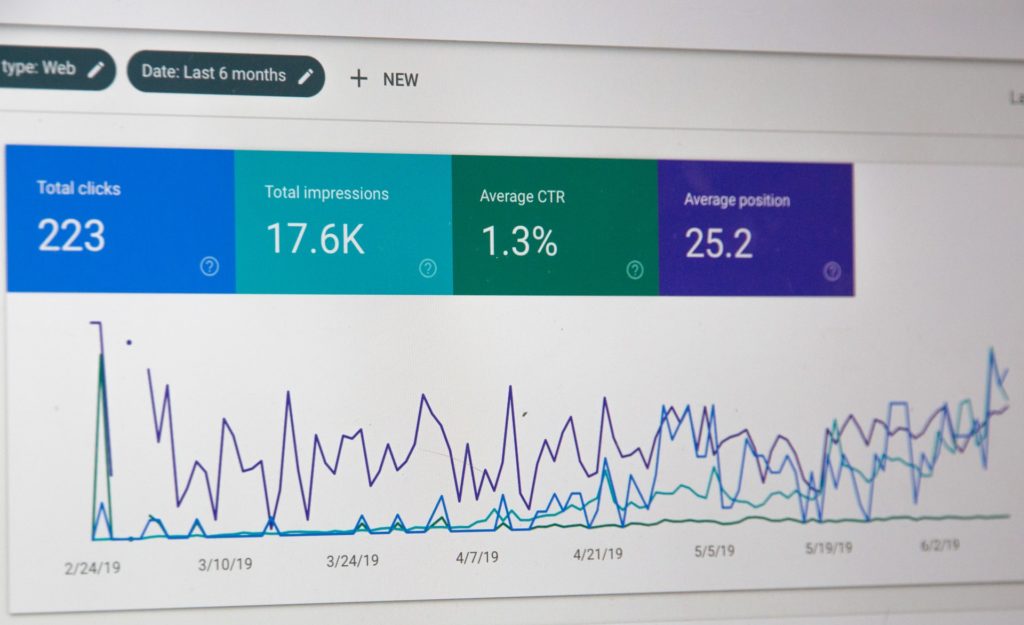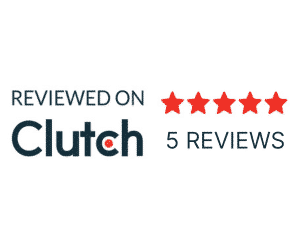Here’s a quick trivia question for you:
How many ranking factors does Google take into account when deciding where to position your site’s content in search results?
Give up?
The answer is a whopping 200+!
As a business owner or marketer, how are you supposed to keep track of every single search ranking factor? Also consider that Google tweaks their algorithm 500-600 times per year!
Of course, even the best SEOs don’t know for sure exactly how Google ranks web pages. But, through a mix of tight-lipped Google search product managers, and a lot of independent analysis, we have a good sense of what search ranking factors are most important in 2021.
Here are the top 7 Google search ranking factors that most businesses should focus on.
1. Quality Backlinks
Yes, backlinks still matter. In fact, they’re still the #1 ranking signal. But whereas in the past, just a sheer number of links meant your site had a good chance of ranking page 1, this is no longer the case.
SEO has evolved.
In fact, here’s a recent virtual office hours with John Mueller, Search Advocate at Google where he delves into this very point.
There are two guiding principles to follow when it comes to obtaining backlinks: Authority and Relevance.
Authoritative links are those sourced from sites with a high Domain Rating (DR), aka, Domain Authority (DA). Domain ratings start at 1 and go to 100.
Here’s how leading SEO data platform Ahrefs explains Domain Rating:
“Domain Rating (DR) shows the strength of a website's backlink profile compared to the others in our database on a 100-point scale.”
-Ahrefs
News and media sites, like the New York Times, have some of the highest domain ratings on the web (it’s a 94, if you’re curious).
Why?
Because other sites are constantly citing articles and linking out to the NYT. So is getting a link from the New York Times the holy grail of link building?
The answer is ‘yes.’ And ‘no.’
Yes, it’s a massive success to get a link from the NY Times, simply from a PR perspective and the social proof it delivers for a business.
But, Google also looks at the ratio of incoming/outgoing links to a domain. The NY Times receives links in from over 1.5 million sites and links out to over 280,000 domains. That puts the ratio at 5/1, inbound/outbound.
Sales and marketing SaaS provider Hubspot, with a DR of 92, receives inbound links from 251,000 domains, and links out to 25,000. This gives it a ratio of 10/1.
So is a link from Hubspot more impactful from an SEO perspective than from the NY Times?
Not necessarily, as that brings us to the next link building principle of relevance.
In addition to the overall authority of a site, Google also looks at how relevant a linking site is in relation to your own. If you sell electric bicycles on your site and receive a link from a fashion blog, that would not be considered relevant ⸺ regardless of how high the site’s DR.
It just makes intuitive sense that Google wants to reward sites that are seen as thought leaders in their specific sector or service area.
Takeaways:
- Remember that having a well-rounded backlink portfolio is the winning strategy for link building
- This includes ‘nofollow’ links and links from sites with lower DRs — as long as the linking domains are relevant and not spammy

2. Content Freshness
This Google ranking factor is pretty straightforward. Let’s say you’re looking to buy a new car, or even a new laptop. Do you want to see product reviews from 2018?
Of course not!
Notice how all of the top search results for “best laptops” contain the current year, 2021, in the title tag. More importantly, you can bet the content within contains the most up to date information on the newest laptops on the market.
While content freshness is important for many categories and topics, it’s not necessarily true across the entire spectrum of searches.
Consider a search like “US national parks.” The National Park system has existed for over 100 years. Although new parks have been added to the system, not much else has changed.
Therefore, the content that ranks on page 1 is not necessarily ‘new’ or ‘fresh.’ Although the articles from Conde Nast and Travel & Leisure are both recently published, note how they do not outrank US News and US-Parks.com, respectively.
Takeaways:
- The bottom line here is to consider the search intent behind each query
- Then, decide whether relative freshness of content is a driving factor for both ranking and click through rates.
Which brings us to the #3 ranking factor…
3. Search Intent
There’s a bad joke among SEOs that goes a little something like this:
If someone searches for “pizza,” they’re not looking for recipes.
They’re looking for lunch.
Simply put, search intent is the reason behind a user’s query. Over many years, and billions of searches, Google is pretty on point when it comes to understanding intent. The question is: does your page content match?
At Dune7, we think about search intent through content type and content format.
Depending on the search intent, a user expects to see specific types of web pages.
For example, a search for “iPhone 11 features” means a person will likely want to see a product level page about the iPhone 11, with a list of core features and functionality.
Another search for “things to do in Las Vegas” would likely return web pages with lists of activities and top attractions in Vegas. This is called a ‘product list’ page.
Consider yet another search, this time for “how to change a flat tire.” No one wants to see a blog post about changing flat tires. They want practical, digestible information, which might come in the form of a YouTube video or short listicle with clear instructions and illustrations.
Finally, a search like “religious festivals in India” might return longer form blog posts using video, or images, with SEO-friendly alt text to better describe the page content.
Takeaways:
- It’s always worth thinking like your customer to consider search intent before starting any new content production
- Ensure your site has flexible page templates to accommodate various formats in line with user search intent
4. Content Depth
Content depth has been a Google ranking factor since at least 2010. However, content depth is oftentimes confused with content length. The length of any given landing page or blog article is just one piece to consider when talking about content depth.
Content depth is all about how well your page, or domain as a whole, presents itself as an expert around a focus topic.
Depth will vary from topic to topic.
For example, if you’re a florist, customers likely want information on bouquets — varieties, prices, etc. It’s unlikely that a customer will come to your site to learn everything there is to know about botany. So your site content might be more broad, to cover all types of flowers and bouquet combinations, versus deep on any single flower type.
But, this doesn’t mean that content depth is not important. If you’re not offering bouquets for birthdays, anniversaries, Valentine’s Day, and Mother’s Day, you’re probably not going to rank highly.
One tactic to explore to ensure you’re providing optimal depth of content is the concept of content hubs. These are clusters of content that center around a focal topic, in the example below, ‘keto dieting.’
Surrounding the ‘hub’ via internal linking are the ‘spoke’ content pages. For ‘keto,’ this might mean specific pages on why a specific food fits the keto program.
Through content hubs, it becomes apparent how to both organize large amounts of content and organically connect these subtopics. This increases engagement and shows Google you’re an expert on that topic.
Takeaways:
- Again, like other search ranking factors, it’s not about trying to appease the Googlebot. If you think like a user, Google will reward you.
- Content depth does not mean every article needs to be 2,000 words.
- Ask yourself ‘does my content provide the most in-depth information on a topic? Would I be satisfied/would my questions be answered if I landed on my page? If your answers are ‘yes,’ then you’ve likely done a good job with providing content depth.
5. Page Speed
Many SEOs and product managers drive their engineering teams crazy by obsessing over page speed.
Yes, page speed is a key Google ranking factor, because it matters for user experience. Think about every time you’ve hit the back button because a site takes too long to load.
No, micro second improvements will not matter for SEO and time and efforts are better spent elsewhere.
Here’s how to get a grip on page speed and optimize your site for SEO:
- Use a tool like GTMetrix or PageSpeed insights from Google
- Look at your slowest loading pages against landing page traffic across your site. Your sweet spot are pages that receive relatively high amounts of traffic, but load slower on average versus your site overall.
- Look at what specific elements are slowing down your page load speed. Use the ‘waterfall’ chart on GTMetrix to see this
- Discuss the priorities with your developer and consider things like lazy load
Takeaways:
- Page speed is all about user experience.
- The key is balancing ‘lightweight’ page design with UX.
- After optimizing page load times, you should see an overall decrease in bounce rates, which is one signal to Google that users find your site valuable.
6. User experience
Page speed is but one Google ranking factor that impacts user experience. Other metrics to keep an eye on include bounce rate, time on site, and pages per visit (all available in Google Analytics.)
Other ways to improve user experience, a major ranking factor for SEO, is through:
- Responsive design: optimizing your web pages across all devices - desktop, mobile, and tablet. If you’re building a site yourself using a common CMS such as Wix or WordPress, make sure the template you choose is responsive. Most are these days.
If you’re hiring a developer to build your site, ask to see examples of other sites they’ve built responsively and see how the content flows on multiple devices.
Are images cut off? Is the main navigation or CTA buttons too small on mobile? These are all signs that the site wasn’t designed responsively.
- Minimize pop ups: Don’t you hate when you click through to read an article and get hit instantly with a full page pop up? Well, Google does too, and they frown upon this practice.
If you want to avoid angering your users, and search engines, avoid full-page pop ups and interstitials. Make sure any pop ups you do have, such as email subscription widgets, do not impede the user journey or block important content.
A good rule of thumb for pop ups is ‘less is more.’
Takeaways:
- Designing your site with SEO in mind from the start doesn’t mean skimping on creativity.
- But, keep in mind that design for the sake of creativity often does not mean optimal value for SEO.
7. Site Security
The last, but definitely not least, important Google ranking factor is site security.
Why does Google care how secure your site is?
Think of Google as the highway patrol and your site as one of the thousands of cars zipping around at any given moment. Sure, you own your car, but if the highway patrol catches you not wearing your seatbelt, you get a ticket. It’s about the safety of you, your passengers, and those around you.
The same goes for the internet. You’re the owner and webmaster of your domain. Your passengers in this case are your customers or site visitors. If you don’t provide a safe browsing experience, that’s not good for the entire ecosystem.
How do you ensure a secure website? The biggest and most basic factor is obtaining an SSL certificate.
Google wants peace of mind that data won’t be stolen, modified, spoofed, or otherwise compromised. An SSL certificate ensures this by encrypting the data that is passed between your site and its server.
Most hosting providers hook you up with one of these if you pay to use their platform. However, if you have an existing, older site, you might need to migrate your site to ‘https.’
This can become quite a technical task, especially if you have a larger site. It’s always a good idea to hire a great tech SEO to assist with this migration, to ensure that no mistakes are made that could diminish your rankings.
Takeaways:
- Securing your site might sound like a daunting task. But the truth is, the process is usually pretty straightforward and there’s lots of support available from hosting providers, and agencies or consultants, if you need them.



No comments.